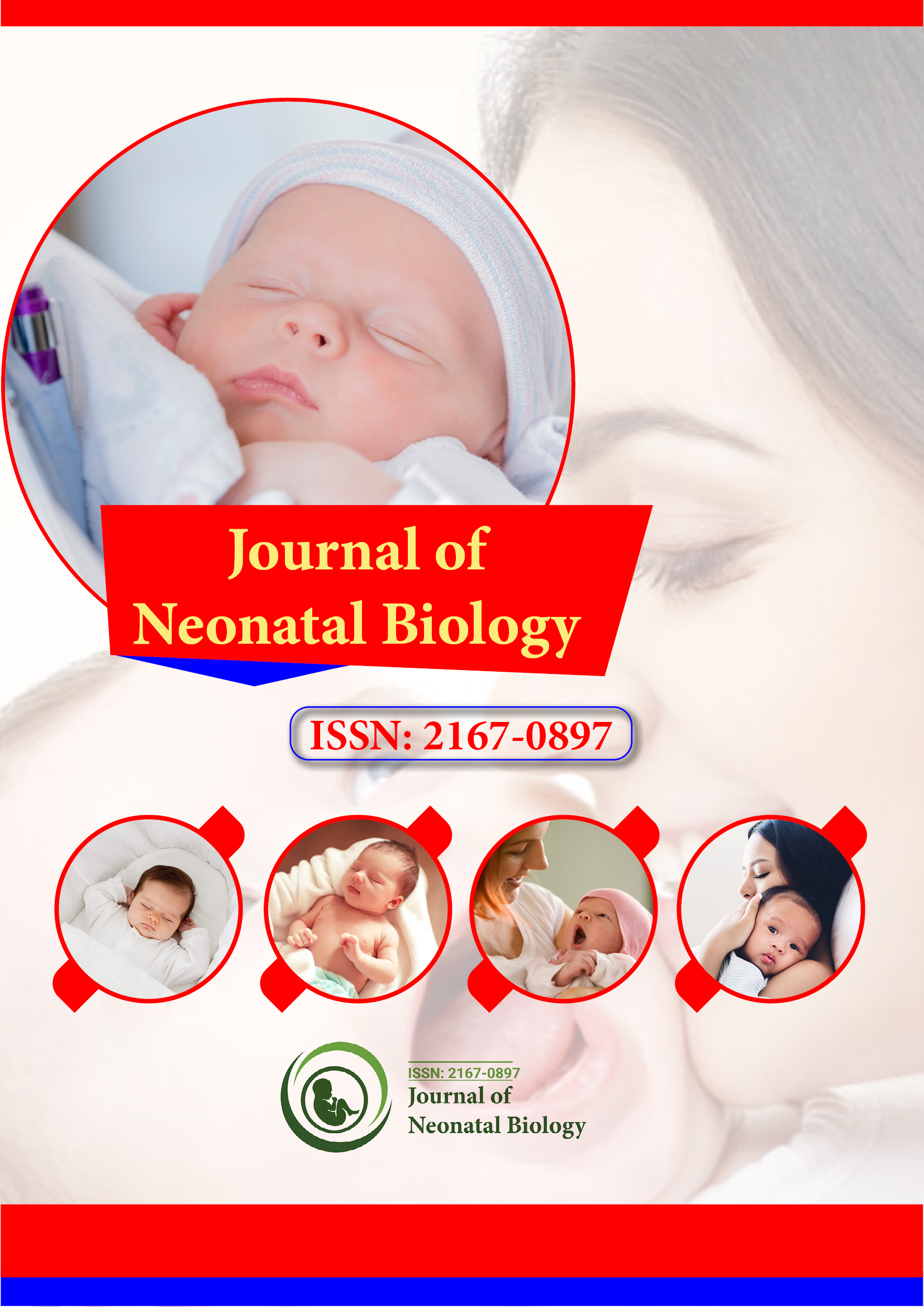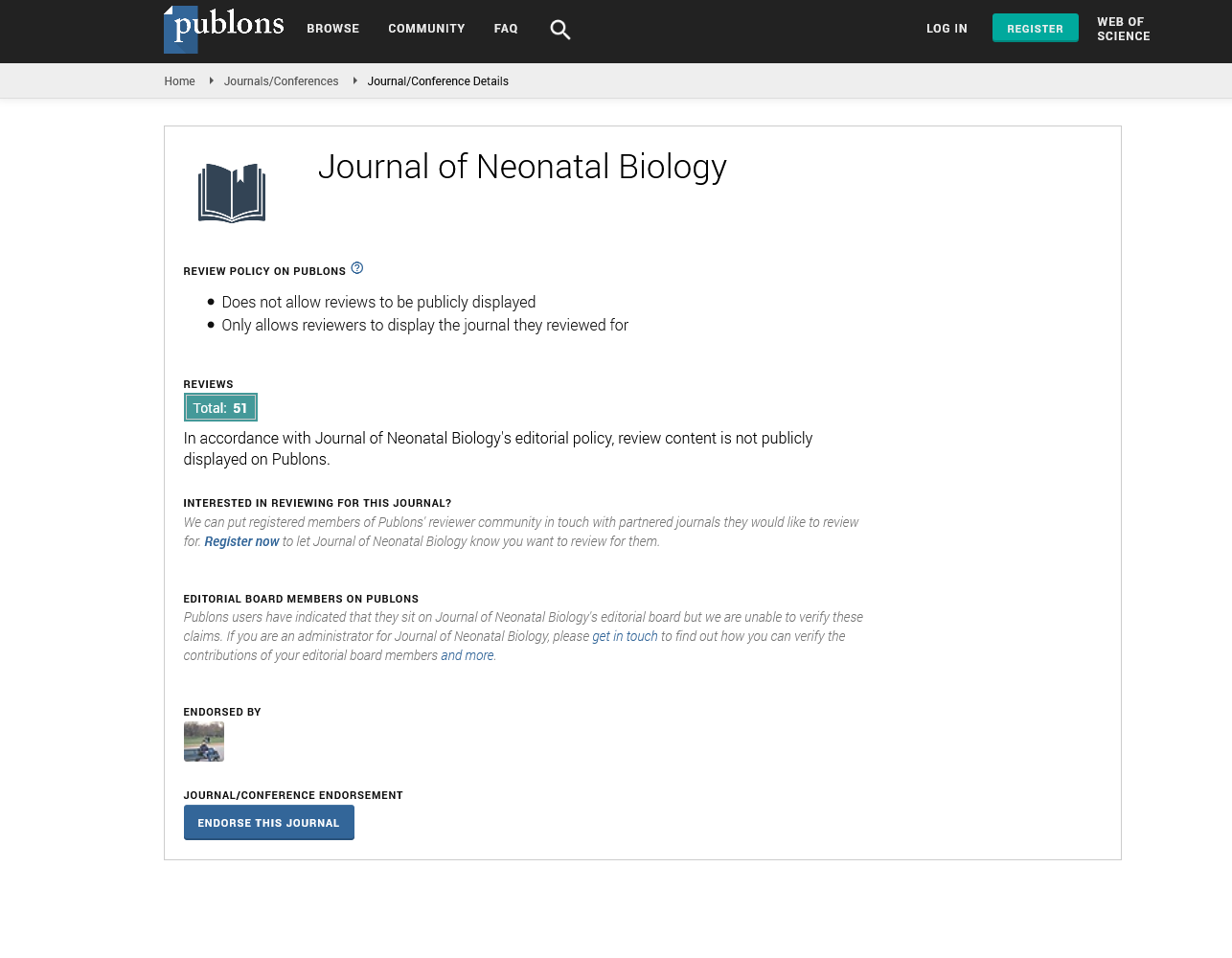Indexed In
- Genamics JournalSeek
- RefSeek
- Hamdard University
- EBSCO A-Z
- OCLC- WorldCat
- Publons
- Geneva Foundation for Medical Education and Research
- Euro Pub
- Google Scholar
Useful Links
Share This Page
Journal Flyer

Open Access Journals
- Agri and Aquaculture
- Biochemistry
- Bioinformatics & Systems Biology
- Business & Management
- Chemistry
- Clinical Sciences
- Engineering
- Food & Nutrition
- General Science
- Genetics & Molecular Biology
- Immunology & Microbiology
- Medical Sciences
- Neuroscience & Psychology
- Nursing & Health Care
- Pharmaceutical Sciences
Commentary - (2025) Volume 14, Issue 1
The Development of the Neonatal Cardiovascular System: What We Know So Far
Daniel Cooper*Received: 19-Feb-2025, Manuscript No. JNB-25-28003; Editor assigned: 21-Feb-2025, Pre QC No. JNB-25-28003 (PQ); Reviewed: 07-Mar-2025, QC No. JNB-25-28003; Revised: 14-Mar-2025, Manuscript No. JNB-25-28003 (R); Published: 21-Mar-2025, DOI: 10.35248/2167-0897.25.14.465
Description
One of the body's most important and intricate systems, the neonatal cardiovascular system is necessary to maintain life from the moment of birth. A newborn experiences a significant change at delivery as it leaves the safe, nutrient-rich environment of the uterus and enters the outer world. The heart and blood vessels, which make up the cardiovascular system, must swiftly adjust to the additional requirements of oxygenating tissues and sustaining the body's expanding circulatory system. To ensure the health and survival of infants, it is essential to comprehend how this system develops and operates during the neonatal period.
Through specific circulatory pathways, the foetus avoids the lungs and liver throughout pregnancy and instead depends on the placenta to exchange oxygen and nutrients. Two essential components of the foetal circulatory system the ductus arteriosus and the foramen ovale are arranged to maximise this configuration. By joining the aorta and pulmonary artery, the ductus arteriosus facilitates blood flow outside of the lungs. In order to further avoid the lungs, blood can move straight from the right atrium to the left atrium through the foramen ovale, a hole in the septum that separates the heart's right and left atria. These modifications help growth and development by ensuring that the foetal organs receive oxygenated blood from the placenta.
The entire circulatory system must shift drastically and instantly when the infant is born and starts breathing air. The lungs expand with the initial breath, which significantly lowers the pulmonary vascular resistance. As a result, blood can enter the lungs, where oxygen exchange occurs.
The ductus arteriosus narrows and finally shuts as a result, rerouting blood flow through the lungs. Likewise, when blood flow patterns alter, the foramen ovale starts to close. The neonatal transition from foetal circulation to normal adult circulation, in which the heart and lungs cooperate to oxygenate the body, begins at this point.
The structure of the neonatal heart differs from that of the adult heart. Because it must effectively pump blood to all developing organs, a newborn's heart is comparatively massive in relation to the rest of the body. During the first few months of life, the left side of the heart, which supplies the body with oxygenated blood, gets stronger and stronger. The heart rate is usually high in the early neonatal period, usually between 120 and 160 beats per minute, to help satisfy the growing infant's increasing oxygen demands.
Newborns' cardiovascular systems also develop quickly in terms of controlling blood pressure. Blood pressure is often lower just after birth, but it progressively rises as the body adjusts to the altered circulatory dynamics. Blood pressure stabilises and the vascular system starts to develop throughout the first few days. As the baby's body develops, the blood vessels, which were more elastic at first, start to somewhat stiffen, helping to regulate blood pressure more steadily.
Despite its remarkable resilience, the newborn cardiovascular system is susceptible to certain disorders that may impede its normal development. For example, premature newborns' underdeveloped heart and blood arteries may make cardiovascular adaption difficult. The shift to normal circulation can be made more difficult by conditions like chronic pulmonary hypertension, in which the lungs' blood arteries stay constricted, or Patent Ductus Arteriosus (PDA), in which the ductus arteriosus fails to shut after birth. To guarantee the infant's survival and healthy cardiovascular function, these problems can necessitate medical intervention.
The cardiovascular system keeps developing as the baby gets bigger. Better blood flow regulation is made possible by the heart's increased pumping efficiency and the vascular system's ongoing development. Although the cardiovascular system will continue to evolve and improve its function as the kid grows into adulthood, it is much closer to its adult form by the end of the first year of life.
In conclusion, the newborn cardiovascular system undergoes a remarkable process of quick and profound alterations in order to fulfill the needs of life beyond the womb. To guarantee appropriate oxygen delivery and general health, this system goes through necessary changes from the closure of foetal circulatory bypasses to the development of the heart and blood vessels. Some babies may have issues that need medical attention, but many babies adjust to this new circulation pattern without any problems. In order to identify and treat any potential health issues in neonates and give each baby the best start possible, it is essential to comprehend how the neonatal cardiovascular system develops.
Citation: Cooper D (2025). The Development of the Neonatal Cardiovascular System: What We Know So Far. J Neonatal Biol. 14:465.
Copyright: © 2025 Cooper D. This is an open access article distributed under the terms of the Creative Commons Attribution License, which permits unrestricted use, distribution and reproduction in any medium, provided the original author and source are credited.

